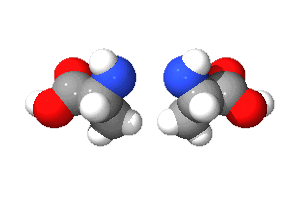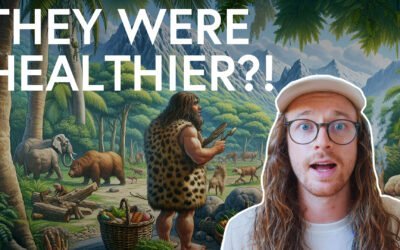In this article learn about how:
- Plant foods can be rich sources of protein, sometimes even surpassing animal-based sources
- Protein is a vital macronutrient used for growth, repair, and energy
- Proteins are made up of amino acids, nine of which are essential and must be obtained from food
- The recommended daily intake of protein can easily be met through a varied diet
- Plant proteins are complete and do not need to be combined at every meal
If I were to ask you which food had more protein – steak or hemp seeds – what would your answer be? What about eggs or tofu? Surprisingly to some, 100 grams of hemp seeds actually contain more protein than the same amount of steak and 100 grams of eggs and 100 grams of tofu have a similar amount of protein at around 14 grams. This is a common misconception about protein sources – that animal-based products are the only or superior source. However, as we will discover, plant foods can also provide us with ample amounts of this essential macronutrient.
Watch the full video on my YouTube Channel
What is Protein?
Protein is one of three classes of macronutrients. These are nutrients that our bodies use for energy – there’s carbohydrates, fats and protein. Unlike carbs and fats, protein has a special role in our bodies beyond just providing us with energy. It is responsible for the growth and repair of our tissues and cells. In fact every physical structure in our bodies – from our hair and nails to our muscles and bones – is made out of protein. Even all the enzymes that allow our metabolic processes to occur, that allow us to exist! They’re all made of protein.
The Building Blocks: Amino Acids
So, sure all this is interesting, but what really is protein?! Proteins are strings of molecules called amino acids. There are 20 different amino acids that our bodies use to create proteins. Nine of these are essential amino acids that our bodies cannot produce on their own – we must get them from food. Think about these amino acids like lego blocks – if you’re trying to build something specific then you need the right shaped block. Just as you can combine two square blocks to make a rectangle one, our bodies can use these essential 9 amino acids to produce the 11 other ones. Our DNA contains instructions that guide our bodies in piecing together these amino acids into chains millions of molecules long. These chains then fold into complex three-dimensional structures that do everything from making up the physical form of our bodies, give us our eye and hair colours as well as creating enzymes that power the metabolic processes of our bodies, like digestion of food.

How Much Protein Do We Need?
The recommended daily intake (RDI) for protein has been set at 0.8 grams per kilogram of body weight, based on studies determining the necessary amount plus a bit extra to ensure everyone’s needs are adequately met. For example, I weight about 66 kilograms so I only need about 53 grams of protein per day – an amount easily obtained through one or two high-protein plant-based meals.
For those like me who lead an active lifestyle or aim to build muscle mass, a higher intake may be beneficial. Athletes might aim for around 1.2 grams per kilogram per day while those wanting to build muscle could go up to 1.6 grams or slightly more per kilogram per day.
Legumes: Nature’s Perfect Protein Source
Whether you trying to reduce your intake of meat or not I highly recommend everyone to eat more legumes! Think chickpeas, beans, lentils and peas. They’re packed with protein and other essential nutrients as well as being very budget friendly. In nutrition science legumes are consistently associated with lower rates of disease and improved longevity. Imagine if there was a drug you could take every day that could extend your life – would you take it?! Well legumes can help with that, but unfortunately nearly no-one is eating the recommended amounts.
Debunking Myths About Plant-Based Protein
What about the idea that plant-based proteins are incomplete – lacking in some essential amino acids? I want you to think about this for a second. As we’ve discussed, amino acids are the essential building blocks for life. Plants also need these building blocks too! It would actually be incredibly bizarre if it turned out that plants were missing some of these essential amino acids. How would they be able to survive?!
All foods (including all plants) have varying levels of the nine essential amino acids. When we consume a varied balanced diet including lots of whole plant foods, they add up together and provide more than enough of each different amino acid needed.
What about combining specific plant foods at every meal to ensure we get all nine essential amino acids? This idea was actually proposed by an author with little knowledge on nutrition in the 1970s. She actually corrected this misinformation in a later version of her book but unfortunately it stuck around despite being inaccurate. Our bodies are incredibly intelligent and have evolved for millions of years in order to survive in difficult environments. We couldn’t have survived as well as we have if we had to carefully complement protein at each meal! Our bodies store a ‘pool’ of essential amino acids – that come from our food and are also recycled from the metabolic processes of our bodies – so for example if we eat a meal that is lower in a certain amino acids, our bodies can easily make up for it!
In reality, as long as you’re eating a variety of whole foods and getting enough calories for your energy requirements, you’ll easily meet your protein and essential amino acid needs without having to worry about combining specific foods at every meal. Don’t stress, just eat more plants!
Plant-Based Proteins: A Win-Win-Win
Choosing plant-based proteins over animal-based ones isn’t just about personal health; it’s also about planetary health and financial wellbeing:
- Economical: Foods like lentils, chickpeas, and beans are great sources of protein and can be as little as 50 cents per serving making them an incredibly budget-friendly choice.
- Environmental: Animal farming is often cruel, resource-intensive and inefficient whereas growing plants directly for human consumption saves water and other resources as well as reducing greenhouse gas emissions and land usage.
- Health: Numerous studies show all dietary patterns easily meet recommended protein requirements when varied and balanced. Plant-based protein is consistently associated with improved health, reduction of disease and improved longevity.
Key Takeaways:
- Both animal-based and plant-based foods can provide ample amounts of protein.
- Proteins play crucial roles in body growth, repair processes, energy production.
- We don’t need to combine specific plant foods at every meal to get all nine essential amino acids.
- Choosing plant proteins not only benefits personal health but also supports environmental sustainability and economic savings.
If you’re looking for support with including some more plant-based protein in your diet, I offer personalised one-on-one sessions to help you thrive on a plant-based diet, feel amazing, and make the changes you need to live a long and healthy life!
References and Resources:
https://www.ncbi.nlm.nih.gov/pmc/articles/PMC4081456/
https://academic.oup.com/ajcn/article/100/1/278/4576571?login=false
https://www.sciencedirect.com/science/article/abs/pii/S2212267216311923
Protein needs calculator: https://examine.com/protein-intake-calculator/





0 Comments